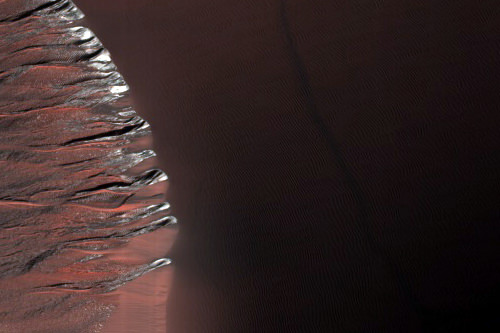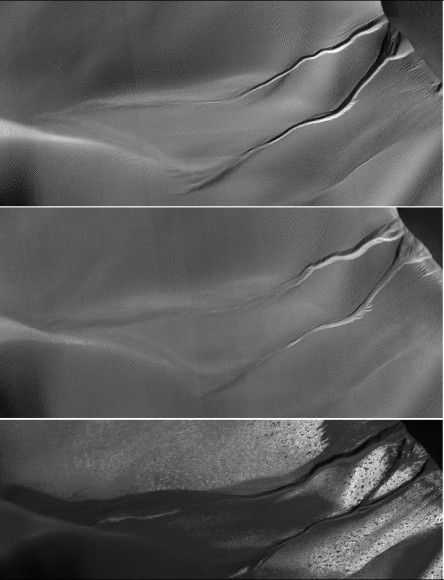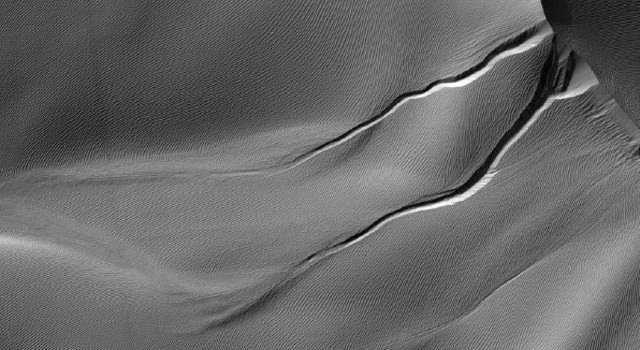[/caption]
Intriguing images of brand new, fresh gullies on Mars has most of us thinking of one thing: water. But at least for one type of Mars gully, carbon dioxide frost is the impetus behind fresh flows showing up on images from orbiting spacecraft.
“Gullies that look like this on Earth are caused by flowing water, but Mars is a different planet with its own mysteries,” said Serina Diniega, author of a new paper published in the journal Geology. “The timing we see points to carbon dioxide, and if the mechanism is linked to carbon-dioxide frost at these dune gullies, the same could be true for other gullies on Mars.”
Scientists have seen evidence of fresh gullies on Mars, beginning 2000 with images from the Mars Global Surveyor. Different mechanisms were proposed including water and carbon dioxide, as well as other forces.
On the HiRISE website, searching for “gullies” provides a bounty of images. Some fresh gullies are on sand dunes, commonly starting at a crest. Others are on rockier slopes, such as the inner walls of craters, sometimes starting partway down the slope.

While a graduate student at the University of Arizona, Tucson, Diniega tracked changes in gullies on faces of sand dunes in seven locations on southern Mars. In looking at before-and-after images, in all cases, the gullies appeared after the known winter build-up of carbon-dioxide frost on the dunes. Before-and-after images that looked at periods in spring, summer and autumn showed no new activity.
Because new flows in these gullies apparently occured in winter, rather than at a time when any frozen water might be most likely to melt, Diniega and co-authors at the University of Arizona and Johns Hopkins University Applied Physics Laboratory believe they found evidence that carbon dioxide, rather than water, were responsible for the flows. Some carbon dioxide from the Martian atmosphere freezes on the ground during winter and sublimates back to gaseous form as spring approaches.

“One possibility is that a pile of carbon-dioxide frost accumulating on a dune gets thick enough to avalanche down and drag other material with it,” Diniega said. Other suggested mechanisms are that gas from sublimating frost could lubricate a flow of dry sand or erupt in puffs energetic enough to trigger slides.
The team focused their study on dune gullies that are shaped like rockier slope gullies, with an alcove at the top, a channel or multiple channels in the middle, and an apron at the bottom. The 18 dune gullies in which the researchers observed new activity range in size from about 50 meters or yards long to more than 3 kilometers (2 miles) long.
Source: JPL


Hmm.. So if the crevasse doesn’t get you… the landslide will? And don’t be tempted to swim in the dust lakes! You’ll sink like a rock!
This is a good explaination to these weird features. I have stared at this gulleys and never could see why water would work in this manner.